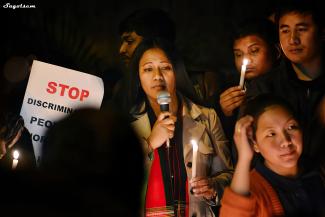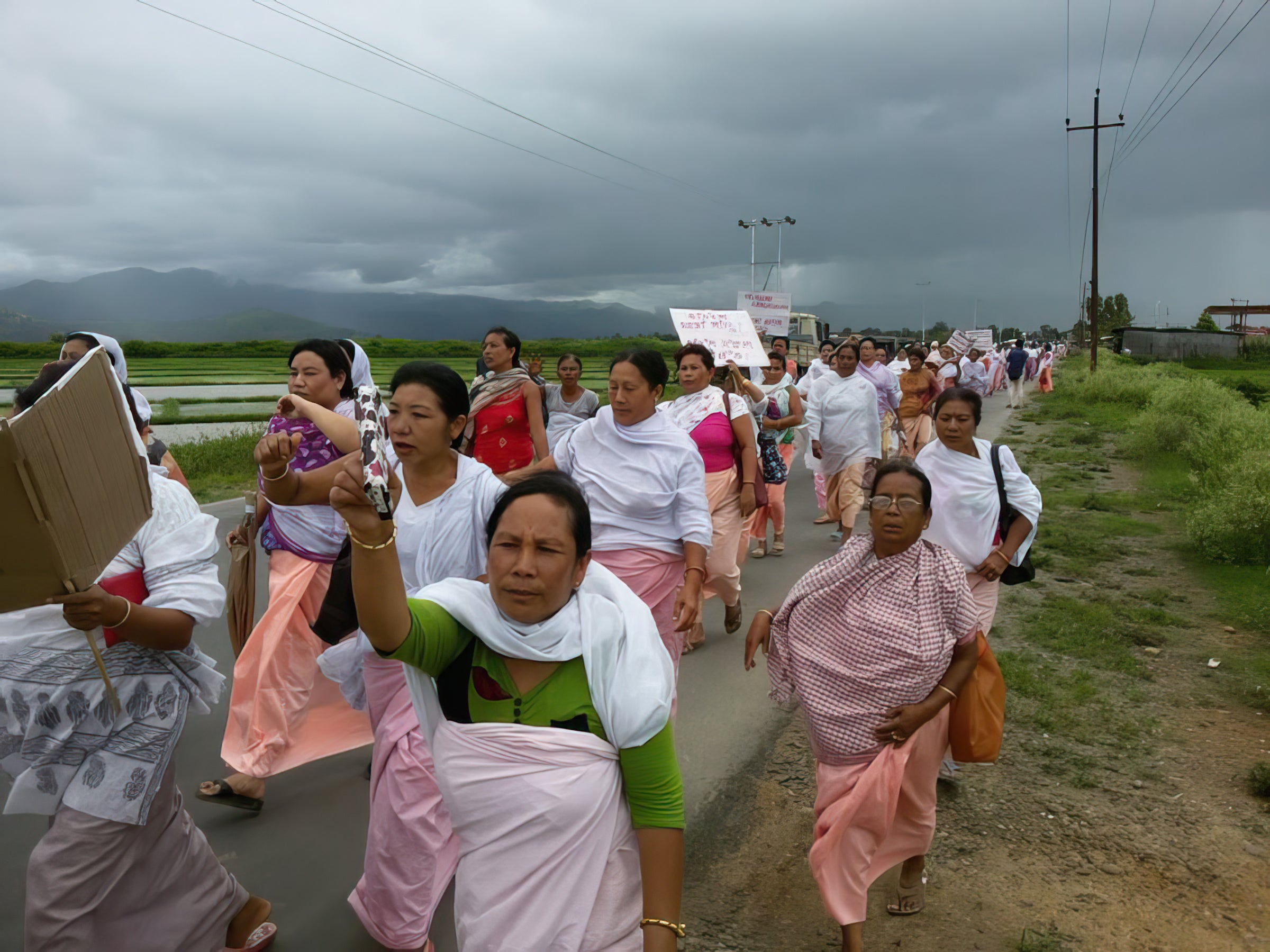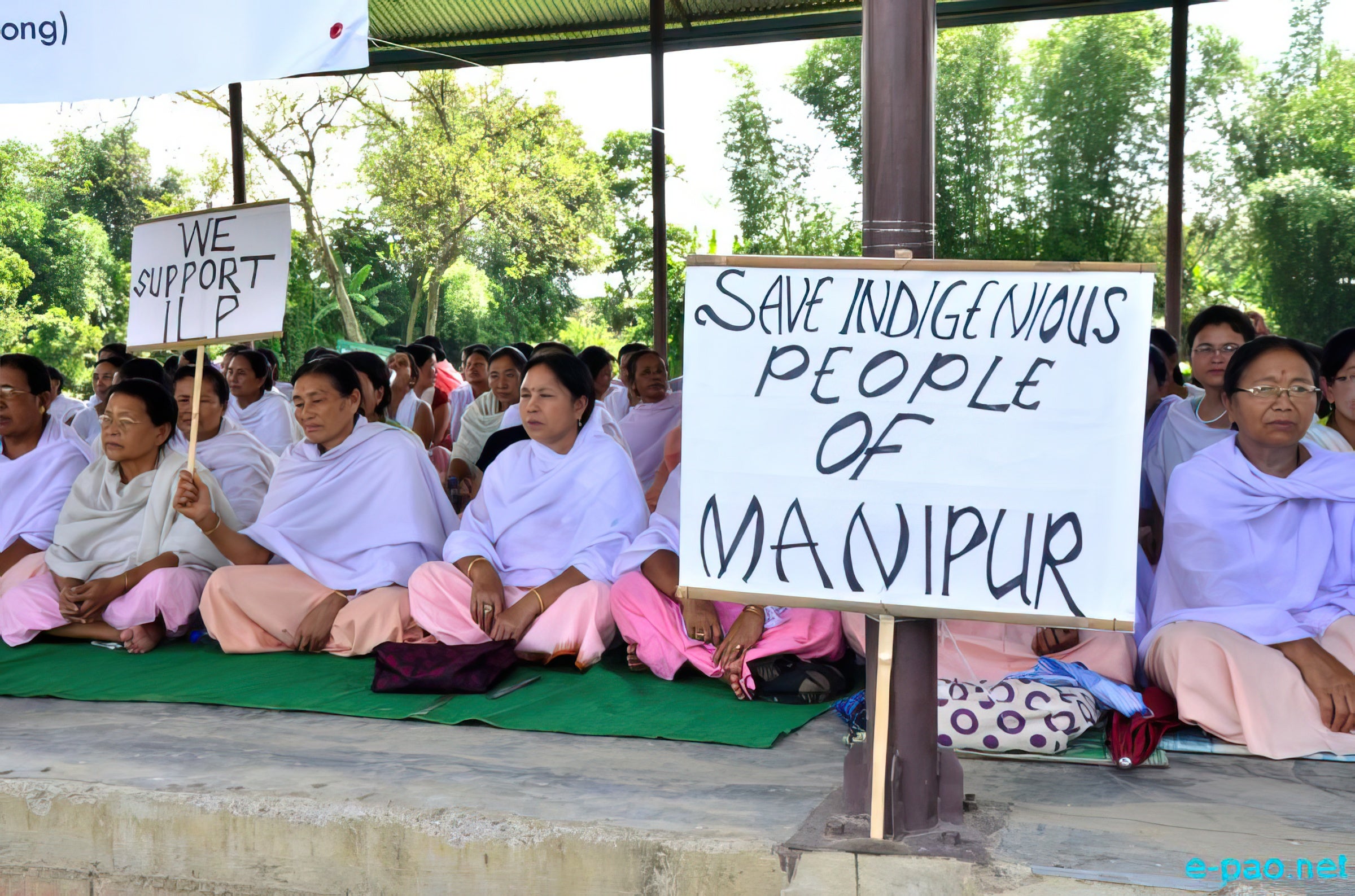
We live in a world where freedom, dignity, and equality are cherished but little realized. The British left India after 200 years of colonial rule, yet immediately after their departure, on September 11, 1958, the newly independent Union of India imposed the Armed Forces Special Powers Act (AFSPA) on 45 million Indigenous people in Northeast India. The first use of AFSPA was on August 15, 1942, employed by the British to thwart Mahatma Gandhi’s Quit India Movement, which demanded an end to British colonial rule.
The aim of AFSPA at that time was “to confer special powers upon certain officers of the Armed Forces;” chiefly, a license to kill. The imposition of martial law on Indigenous Peoples in Manipur and Northeast India has led to at least 20,000 killed in Manipur and over 50,000 in Northeast India, in addition to numerous incidents of rape, arrests, torture, and extra-judicial executions, according to Human Rights Watch.
Under the Act, any crime committed by armed forces are given complete impunity. The state of Manipur borders Myanmar and is home to 33 recognized Scheduled Tribes belonging either to the Nagas or the Kukis/Zo, the two major conglomerates of Manipur Tribal Peoples, as well as the Meitei Peoples, who are Indigenous but not classified as a Scheduled Tribe. Meitei Peoples represent around 53 percent of the population of Manipur, followed by various Naga Peoples at 24 percent, and various Kuki/Zo Tribes (also known as Chin-Kuki-Mizo Peoples) at 16 percent. On May 3, 2023, violence erupted in Manipur that took the lives of over 200+ people.

Indigenous women in Manipur demanding peace and a stop to violence.
More than 8,000 homes were burned, resulting in over 70,000 internally displaced people. The violence that started on that day continues in “buffer zones” created by the Indian military between the Meiteis and the Kukis to stop the two warring communities from crossing over into each other’s territories. The initial conflict arose when the Meitei Indigenous community sought affirmative action for being members of Scheduled Tribes, a demand that was opposed by the Kuki community. The rhetoric has led to entrenched rifts between the two communities, with elements of both communities arming themselves with sophisticated weaponry.
These days, Manipur resembles battlefields akin to Ukraine, Darfur, or Afghanistan. Women, children, and the elderly have suffered immensely. Representatives of both sides have appealed for help from the government of India as well as the United Nations. Tragically, this is not the first time such massacres have happened. Mass killings have been ongoing since 1958. Many of our homes are near many massacre sites, and many of us have grown up witnessing and surviving this trauma. I grew up near the Heirangoithong Massacre site in Imphal, Manipur, where, in 1984, 14 civilians belonging to the Meitei community were gunned down by Central Reserve Police Force while watching a volleyball match. Northeast India is dotted with such massacre sites, which are known by locals as “killing fields.”
Other massacres that I remember are the gunning down of 10 civilians belonging to the Meitei community in the Malom Massacre in Manipur, and the Regional Institute of Medical Sciences Massacre of 1995, where nine civilians, including a medical student, were killed. India is the only country in the world where there is no war, and yet an emergency martial law remains imposed. AFSPA was an emergency act that was meant to be in place for only three to six months when first passed in 1958, but has now been in place for 64 years.
All major political parties of India, including the government, have failed to listen to and protect the Indigenous Peoples of Manipur and the Northeast region. The government has called for a Peace Committee and a judicial committee consisting of retired judges has been constituted, yet no one has been held accountable to date. Manipur and Northeast India is an area of immense geo-strategic importance, as it shares boundaries with five countries, including Myanmar and China.
It is critical that the situation of violence is brought under control. The defense of a nation cannot be left only to men with guns and by turning Indigenous territories into war sites. Like all previous massacres of Indigenous Peoples in Northeast India, we hope that the May 2023 killings will not end simply by awarding monetary payment and government jobs to survivors, with no justice. Many security forces who have been operating with impunity in Northeast India have gone on to be a part of United Nations Peacekeeping Forces.

Indigenous women in Manipur demanding peace and a stop to violence.
To the present day, no security forces personnel involved in criminal offenses such as rape, torture, death, and disappearances of civilians in Northeast India have ever been charged or put behind bars for wrongdoings. No one is above the law, and democracies must protect the rights of all. Repeal of martial law, rebuilding trust in state and central security forces, and communal harmony between warring communities would be the greatest confidence building measure that the government of India can do for the Indigenous people of the Northeast, who have been wrongfully subjected to martial law for 64 years.
Militarization of Indigenous Peoples’ lands and territories violates the Constitution of India, the Universal Declaration of Human Rights, and the UN Declaration on the Rights of Indigenous Peoples. India must have the moral courage to repeal a former British Colonial Law, which has no place in a democracy. No license to kill shall be granted to any community. Work should be about protecting Indigenous rights, deepening democracy, demilitarization, and ensuring rule of law. The rampant killings and genocide of Indigenous Peoples of Northeast India must stop.
In August 2023, an International Tribunal for Peace in Manipur was formed that includes Nobel Peace Prize laureates Shirin Ibadi and Jodi Williams and the International Peace Bureau. In spite of the violence, Indigenous Peoples of Northeast India have been resilient in the face of oppressive systems and people, epitomized by the rise of an Indigenous women’s resurgence throughout Northeast India. Indigenous women in Manipur have a history of non-violent resistance against former British colonial rule known as Nupi-Lan, or the Women’s Wars, of 1904 and 1939. This legacy still lives on, in spite of the killings. And herein lies the truth: where there’s power, there’s resistance.
--Binalakshmi Nepram (Meitei) is a scholar, Founder of Manipur Women Gun Survivors Network and Northeast India Women’s Initiative for Peace, and Convener of the Global Alliance of Indigenous Peoples, Gender Justice and Peace.
Top photo: Binalakshmi Nepram attending a candlelight vigil in New Delhi calling for an end to racial discrimination of Indigenous Peoples in Northeast India.
Photos courtesy of Binalakshmi Nepram and E-Pao.
